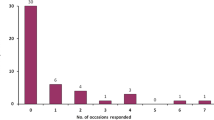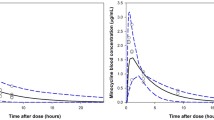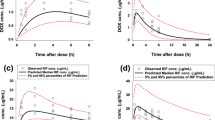Abstract
Chemotherapy of onchocerciasis by doxycycline, which targets symbiotic Wolbachia endobacteria, has been shown to result in a long-term sterility of adult female worms and corresponding absence of microfilariae. It represents an additional chemotherapeutic approach. The aim of this study was to determine whether a similar regimen would also show efficacy against Wuchereria bancrofti. Ghanaian individuals (n=93) with lymphatic filariasis and a minimum microfilaremia of 40 microfilariae/ml were included in a treatment study consisting of four arms: (1) doxycycline 200 mg/day for 6 weeks; (2) doxycycline as in (1), followed by a single dose of ivermectin after 4 months; (3) ivermectin only; or (4) no treatment during observation period of 1 year (ivermectin at the end of the study). Doxycycline treatment resulted in a 96% loss of Wolbachia, as determined by real time PCR from microfilariae. After 12 months, doxycycline had led to a 99% reduction of microfilaremia when given alone, and to a complete amicrofilaremia together with ivermectin. In contrast, after ivermectin treatment alone a significant presence of microfilariae remained (9% compared to pretreatment), as known from other studies. This study shows that doxycycline is also effective in depleting Wolbachia from W. bancrofti. It is likely that the mechanism of doxycycline is similar to that in other filarial species, i.e., a predominant blockade of embryogenesis, leading to a decline of microfilariae according to their half-life. This could render doxycycline treatment an additional tool for the treatment of microfilaria-associated diseases in bancroftian filariasis, such as tropical pulmonary eosinophilia and microfiluria.

Similar content being viewed by others
References
Taylor M, Hoerauf A (1999) Wolbachia bacteria of filarial nematodes. Parasitol Today 15:437–442
Bandi C, Trees AJ, Brattig NW (2001) Wolbachia in filarial nematodes: evolutionary aspects and implications for the pathogenesis and treatment of filarial diseases. Vet Parasitol 98:215–238
Taylor MJ, Hoerauf A (2001) A new approach to the treatment of filariasis. Curr Opin Infect Dis 14:727–731
Hoerauf A, Mand S, Adjei O, Fleischer B, Büttner DW (2001) Depletion of Wolbachia endobacteria in Onchocerca volvulus by doxycycline and microfilaridermia after ivermectin treatment. Lancet 357:1415–1416
Hoerauf A, Walter RD, Remme H, Lazdins J, Fleischer B (2001) Call to consolidate achievements for onchocerciasis and lymphatic filariasis control. Trends Parasitol 17:566–567
Hoerauf A, Adjei O, Büttner DW (2002) Antibiotics for the treatment of onchocerciasis and other filarial infections. Curr Opin Invest Drugs 3:533–537
Ottesen EA (2000) The global programme to eliminate lymphatic filariasis. Trop Med Int Health 5:591–594
Molyneux DH, Taylor MJ (2001) Current status and future prospects of the Global Lymphatic Filariasis Programme. Curr Opin Infect Dis 14:155–159
Hoerauf A, Volkmann L, Hamelmann C, Adjei O, Autenrieth IB, Fleischer B, Büttner DW (2000) Endosymbiotic bacteria in worms as targets for a novel chemotherapy in filariasis. Lancet 355:1242–1243
Fischer P, Liu X, Lizotte-Waniewski M, Kamal IH, Ramzy RM, Williams SA (1999) Development of a quantitative, competitive polymerase chain reaction-enzyme-linked immunosorbent assay for the detection of Wuchereria bancrofti DNA. Parasitol Res 85:176–183
Dreyer G, Amaral F, Noroes J, Medeiros Z, Addiss D (1995) A new tool to assess the adulticidal efficacy in vivo of antifilarial drugs for bancroftian filariasis. Trans R Soc Trop Med Hyg 89:225–226
Noroes J, Addiss D, Amaral F, Coutinho A, Medeiros Z, Dreyer G (1996) Occurrence of living adult Wuchereria bancrofti in the scrotal area of men with microfilaraemia. Trans R Soc Trop Med Hyg 90:55–56
Faris R, Hussain O, El Setouhy M, Ramzy RM, Weil GJ (1998) Bancroftian filariasis in Egypt: visualization of adult worms and subclinical lymphatic pathology by scrotal ultrasound. Am J Trop Med Hyg 59:864–867
More SJ, Copeman DB (1990) A highly specific and sensitive monoclonal antibody-based ELISA for the detection of circulating antigen in bancroftian filariasis. Trop Med Parasitol 41:403–406
Simonsen PE, Dunyo SK (1999) Comparative evaluation of three new tools for diagnosis of bancroftian filariasis based on detection of specific circulating antigens. Trans R Soc Trop Med Hyg 93:278–282
Weil GJ, Lammie PJ, Weiss N (1997) The ICT filariasis test: a rapid-format antigen test for diagnosis of Bancroftian filariasis. Parasitol Today 13:401–404
Plaisier AP, Stolk WA, van Oortmarssen GJ, Habbema JD (2000) Effectiveness of annual ivermectin treatment for Wuchereria bancrofti infection. Parasitol Today 16:298–302
Dunyo SK, Nkrumah FK, Simonsen PE (2000) A randomized double-blind placebo-controlled field trial of ivermectin and albendazole alone and in combination for the treatment of lymphatic filariasis in Ghana. Trans R Soc Trop Med Hyg 94:205–211
Bradley DJ, Warhurst DC (1997) Guidelines for the prevention of malaria in travellers from the United Kingdom. PHLS Malaria Reference Laboratory, London School of Hygiene and Tropical Medicine. Commun Dis Rep CDR Rev 7:R137–152
Hoerauf A, Nissen-Pähle K, Schmetz C, Henkle-Dührsen K, Blaxter ML, Büttner DW, Gallin MY, Al-Qaoud KM, Lucius R, Fleischer B (1999) Tetracycline therapy targets intracellular bacteria in the filarial nematode Litomosoides sigmodontis and results in filarial infertility. J Clin Invest 103:11–18
Dreyer G, Ottesen EA, Galdino E, Andrade L, Rocha A, Medeiros Z, Moura I, Casimiro I, Beliz F, Coutinho A (1992) Renal abnormalities in microfilaremic patients with Bancroftian filariasis. Am J Trop Med Hyg 46:745–751
Taylor MJ, Cross HF, Bilo K (2000) Inflammatory responses induced by the filarial nematode Brugia malayi are mediated by lipopolysaccharide-like activity from endosymbiotic Wolbachia bacteria. J Exp Med 191:1429–1436
St. André A, Blackwell NM, Hall LR, Hoerauf A, Brattig N, Taylor M, Ford L., Hise A, Volkmann L, Lass JH, Diaconu E, Pearlman E (2002) A critical role for endosymbiotic Wolbachia bacteria and TLR4 signaling in the pathogenesis of river blindness. Science 295:1892–1895
Cross HF, Haarbrink M, Egerton G, Yazdanbakhsh M, Taylor MJ (2001) Severe reactions to filarial chemotherapy are associated with the release of Wolbachia endosymbionts into the blood. Lancet 358:1873–1875
Keiser PB, Reynolds SM, Awadzi K, Ottesen EA, Taylor MJ, Nutman TB (2002) Bacterial endosymbionts of Onchocerca volvulus in the pathogenesis of posttreatment reactions. J Infect Dis 185:805–811
Acknowledgements
We would like to thank the individuals of the district health management in East Nzema, Western Region, Ghana, for their cooperation. We would like to thank Mr. John Larbi, Dr. Matthias Grade, and Dr. Yeetey Enuameh for excellent support. Dr. Hoerauf acknowledges financial support by the German Research Foundation (DFG-grant Ho 2009/1-3); the European Commission (grant ICA4-CT-2002-10051), and Caritas Charity.
Author information
Authors and Affiliations
Corresponding author
Rights and permissions
About this article
Cite this article
Hoerauf, A., Mand, S., Fischer, K. et al. Doxycycline as a novel strategy against bancroftian filariasis—depletion of Wolbachia endosymbionts from Wuchereria bancrofti and stop of microfilaria production. Med Microbiol Immunol 192, 211–216 (2003). https://doi.org/10.1007/s00430-002-0174-6
Received:
Published:
Issue Date:
DOI: https://doi.org/10.1007/s00430-002-0174-6




